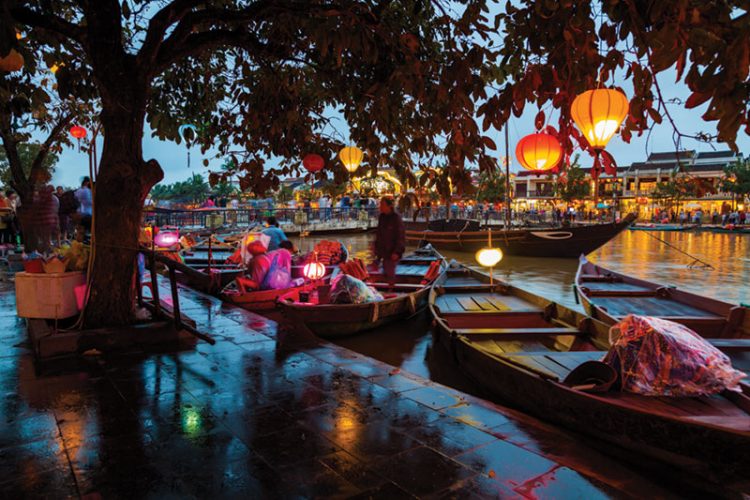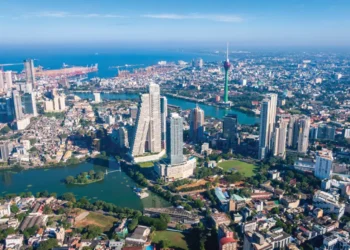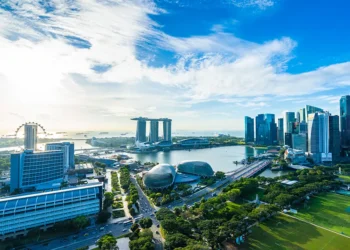Hoiana is perfectly positioned to capitalize on the traditional cultural charms and breathtaking coastal scenery that has sparked a tourism boom in Central Vietnam, most notably in its iconic centers of Da Nang and Hoi An.
If it’s traditional Vietnamese culture you’re after, there aren’t many better places to spend a few days than Hoi An. And it’s this unique proximity to a town listed as a UNESCO World Heritage Site that CEO of Hoiana’s joint venture operating entity, Hoi An South Development Ltd, Steve Wolstenholme believes will give his expansive new property an edge over all other integrated resort developments in the region.
“We are very close to Hoi An, and Hoi An has global recognition as being that charming, culturally alluring Vietnamese experience,” explains Wolstenholme, who also sits on the Vietnam Tourism Advisory Board.

“While we’re not trying to emulate Hoi An specifically, the fact that we are close to Hoi An really gives us an opportunity when our guests come here for them to have a cultural experience as well.
“It’s also why, although we’re an integrated resort, we encourage our guests to explore locally while they’re here. Or if you are here for two weeks we encourage people to visit Ho Chi Minh City or Hanoi as well as the local beach and culture surrounding Hoiana.”
Located in Central Vietnam – a region known for its mix of historic sights and long, white sand beaches – Hoi An and Hoiana are part of Quang Nam Province, covering around 10,400 square kilometers of land and home to almost two million people, bordering the city of Da Nang.
Hoi An, a former trading port, is one of the province’s two world heritage sites (alongside the old Hindu temples of My Son) and borders a UNESCO World Biosphere Reserve in Cu Lao Cham – a collection of eight small islands offering fishing villages, abundant beaches, coral reefs and a diversity of regional seafood.
Once a port of call for French, Chinese and Japanese merchants, the town’s ethnically diverse history is reflected in its uniquely quaint architecture, such as the famous Japan Covered Bridge – designed and built in the early 1700s by Japanese expats to access the nearby Chinese quarter.
Hoi An is also home to the most famous of all Vietnamese lanterns, celebrated each March via the stunning Hoi An Lantern Festival.

“The scenery of Hoi An ancient town at night has a mysterious attraction to visitors, where you can leisurely explore the beauty of the night when it becomes deep, sparkling and fanciful by the light of the lanterns,” says the Quang Nam Department of Culture, Sports and Tourism. Visitors typically enjoy taking an evening boat ride on the Hoai River, the department adds, where they can release lanterns, followed by shopping in the night market, trying their hand at traditional folk games like Bai Choi, enjoying tea and coffee in the Old Town or tasting local street delicacies – listed by TripAdvisor as one of the “Top 25 Best Culinary Destinations in the World” – such as My Quang (noodles with pork and shrimp) and Cao Lau (specialty noodles).
“Hoi An is considered a living museum of architecture and urban lifestyle,” the Department proudly shares.
Just 45 minutes further north is Da Nang, the largest city in Central Vietnam and fifth largest in the country with a population of more than 1.1 million people.
Still one of Vietnam’s most important port cities, Da Nang is renowned for its spectacular scenery, from the picturesque beaches of My Khe and Non Nuoc to the majesty of the Marble Mountains.
From a tourism perspective, the whole Central Vietnam region has traditionally lagged behind its better-known neighbors in the north – home to the government headquarters and bustling business center of Hanoi – and south where Ho Chi Minh City has long been a hugely popular destination for travellers seeking adventure and a vibrant nightlife.
But the scene is changing.
 In 2017, authorities opened the Cua Dai Bridge over the Thu Bon River and a coastal road connecting Da Nang, Hoi An and the eastern part of Quang Nam Province with Nui Thanh District, which counts Chu Lai International Airport among its key features.
In 2017, authorities opened the Cua Dai Bridge over the Thu Bon River and a coastal road connecting Da Nang, Hoi An and the eastern part of Quang Nam Province with Nui Thanh District, which counts Chu Lai International Airport among its key features.
Currently in the midst of its own major expansion project that will include two new runways, Chu Lai is now the second major airport within a 45-minute drive of Hoiana and is slated to receive around 4 million passengers annually by 2025.
The other, Da Nang International Airport which handled 15.5 million domestic and international passenger movements last year, up from just over 13 million in 2018, comprises 35 international and 10 domestic routes and connects major cities across Asia. The 7.6 million visitor arrivals into Quang Nam Province in 2019 represented an annual 17% increase, with the province counting South Korea, Australia, the UK, France and China among its top international source markets.
According to Wolstenholme, it is this growing tourism opportunity that Hoiana hopes to both contribute to and tap into over the coming years.
“Central Vietnam is a destination that is growing and Hoiana is really here to do its part,” he says.

“There are a lot of things that have not necessarily been overly promoted but I’ve lived here for two-and-a-half years now and it’s a very safe place to live, a very charming place to live, very accessible.
“We also employ predominantly local people and we want to see local people do well in this industry, because the industry that we are in is not just about casinos or making beds here. It’s about technical services, IT, marketing, financial services, golf.
“There are a lot of things we want to do not just with the experience of our customers but also the experience of our employees. If we give employees a pathway and pride such that they have pride in the facility that we offer as well as the bigger picture – the brand and Vietnam – then we have very sincere hospitality service because they have an ownership of what we are doing. That’s our purpose.”
































